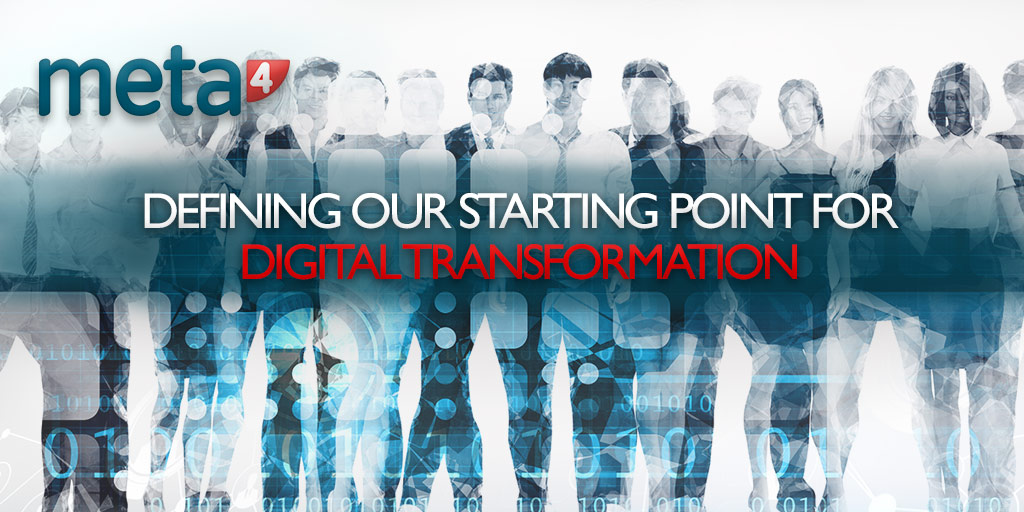Time and time again we have highlighted the importance of and the need for digital transformation in today’s organizations. Clearly, the analysis of how and to what extent the company should be transformed digitally has become a must for business. Except knowing where we are headed isn’t enough, as the effort to reach it will be conditioned by where we find ourselves starting from. So paraphrasing the question and picturing where we want to go and where we would like to go, the question to ask ourselves on this journey should be: what is our starting point?
Awareness of our organization’s current state undoubtedly implies evaluating our employees’ digital skills. For that, we need an organizational system to flexibly put together what we want to become as an organization: the new jobs and profiles that we will need (and already need), either starting from zero (as in, we did not have them) or by evolving the existing jobs which our organization has to evolve. In the initial phase for what we can call the “digital propensity index”, we need to create the digital skills and the questions which will help us to find out each employee’s level.
Then from there, we create an appraisal process to allow us to obtain the first snapshot of the existing digital skills landscape in the company. However, at this point, the next question arises: who do we ask? A manager will hardly be able to explain their employees’ level through a few new indicators, so the answer lies in setting up a process whereby each employee self-assesses using a questionnaire on uses, conducts and behaviours associated with each skill. A self-assessment is logically subjective, so however trivial it may seem, starting off with a snapshot from a clear point of departure—even though the scope of transformation to do has not yet been fully determined—will be extremely important for building the process and inventory, for setting up a calendar of improvement actions, and subsequently for carrying out a realistic implementation.
Another key aspect to consider at this point is measuring the potential for transformation that our employees have, at this juncture we can involve their managers. Both of these aspects, through the digital talent matrix, will help to identify which of our employees will require more support for developing their digital skills (training, coaching, self-development, active supervision, etc.). This will enable the organization to implement the first level of action and to project the efforts required (cost, time, specific actions, etc.) for the organization’s transformation.
{{cta(‘6a313d20-b8f9-4fab-90c5-8bcc6f360cb3’)}}
In recognition of the subjectivity of self-assessments and appraisals we have undertaken, an HR system must make it easy to find out other professionals’ opinions in an agile and simple manner, for example, through dialogue tools created in the professional environment to enrich and objectify the existing knowledge on the digital transformation process the organization seeks.
While factoring in the aspects discussed, the company should tackle yet another aspect. By now it knows what resources are available (the “as is” state) and it has already defined what it wants to become (the “to be” state). Except for specific scenarios (and perhaps unusual ones when both aspects “tally or coincide”), right at this point, the following situations surface:
• The need for configuring key positions and jobs; this is a critical process because this is about determining both how the new job fits into the structure and the corresponding job profile, in terms of functions and responsibilities, key activities, required competencies and skills with their thresholds, etc.
• This should also enable a company in this scenario to define a “Digital Affinity Plan” to be able to identify who the most suitable professionals are for the job, just like for a succession plan, even if such jobs may not be filled as yet. Furthermore, the mandatory development requirements are also defined here in order to fill the job successfully when needed through obtaining the snapshot of the people and times needed for filling the job.
• To finalize and complement the above-mentioned development plans, the system must provide development paths which also enable digital certification. To this end, any approach is valid.However, for transformation, employees must co-share responsibility for their personal digital transformation. Thus, the system must have “key actions”, so that the employee, who is proactive elsewhere, can access learning opportunities (meetings, reading, application plans, challenges, etc.)
To summarize, the system must enable the management of professional development using a “70-20-10” learning model which will optimize available resources. Moreover, this will allow us to find out when a professional acquires a certain level of engagement, as the coveted individual transformation is a matter of desire (attitude), knowing (knowledge) and power (tools, empowerment and position).






